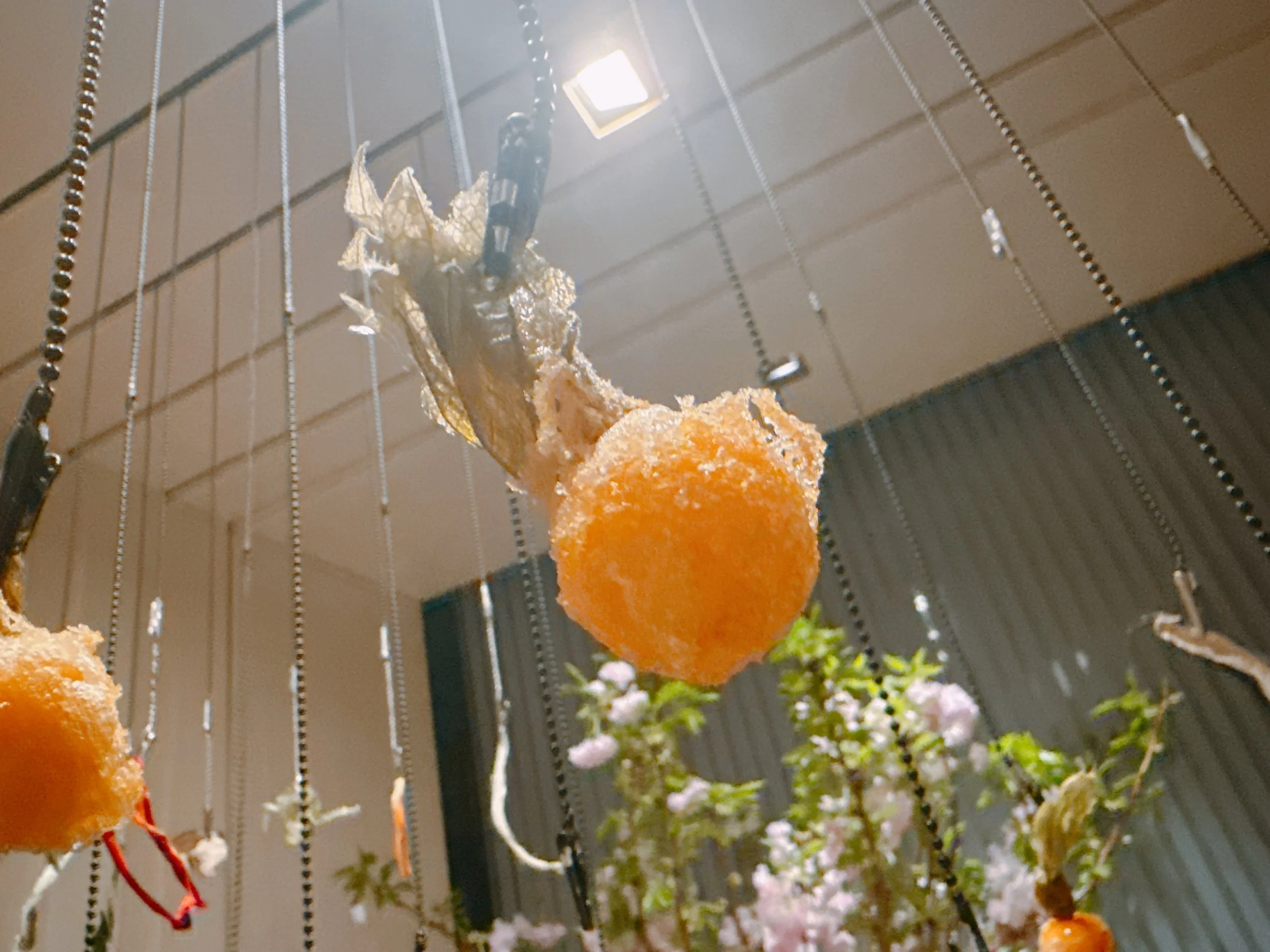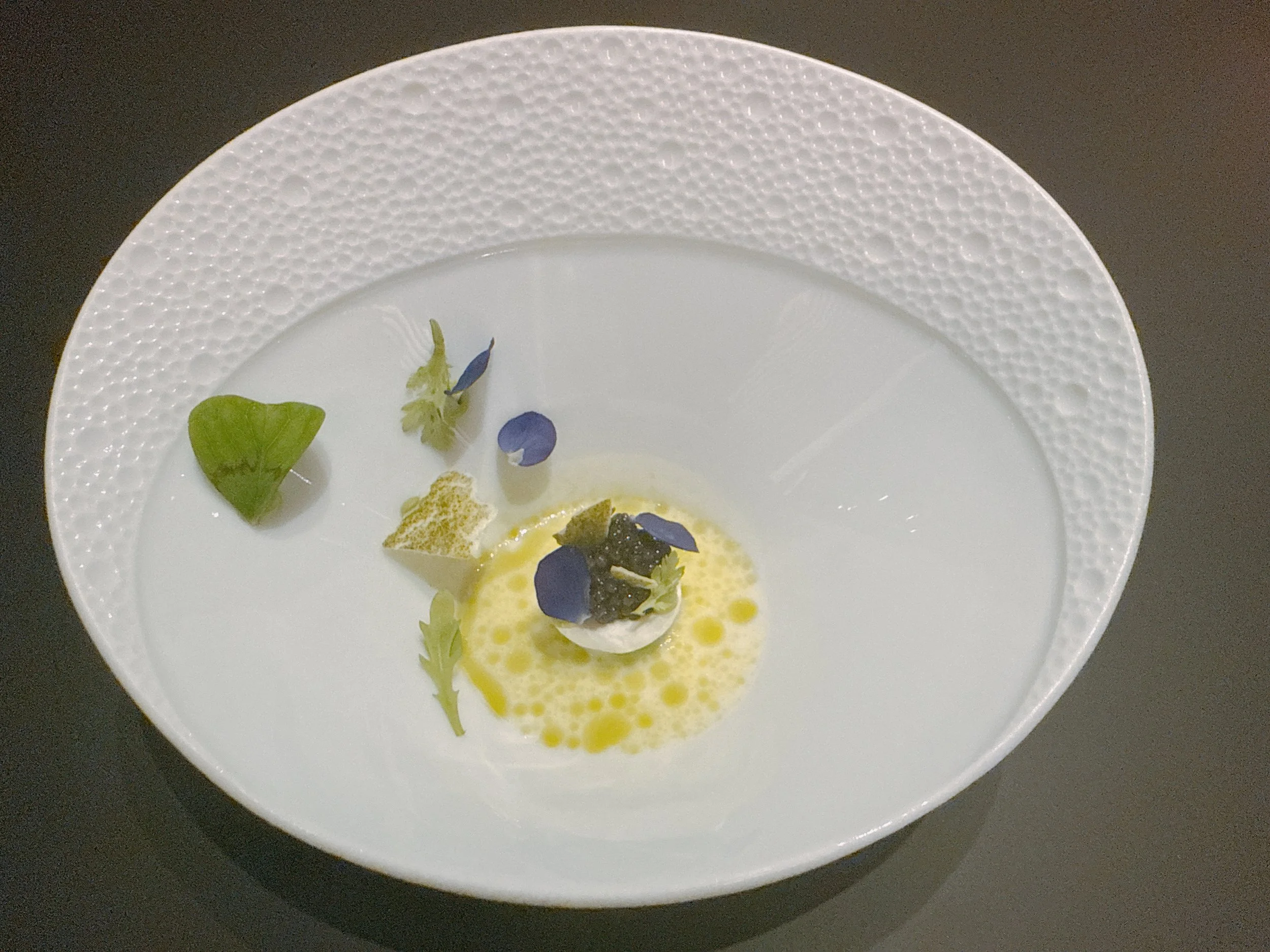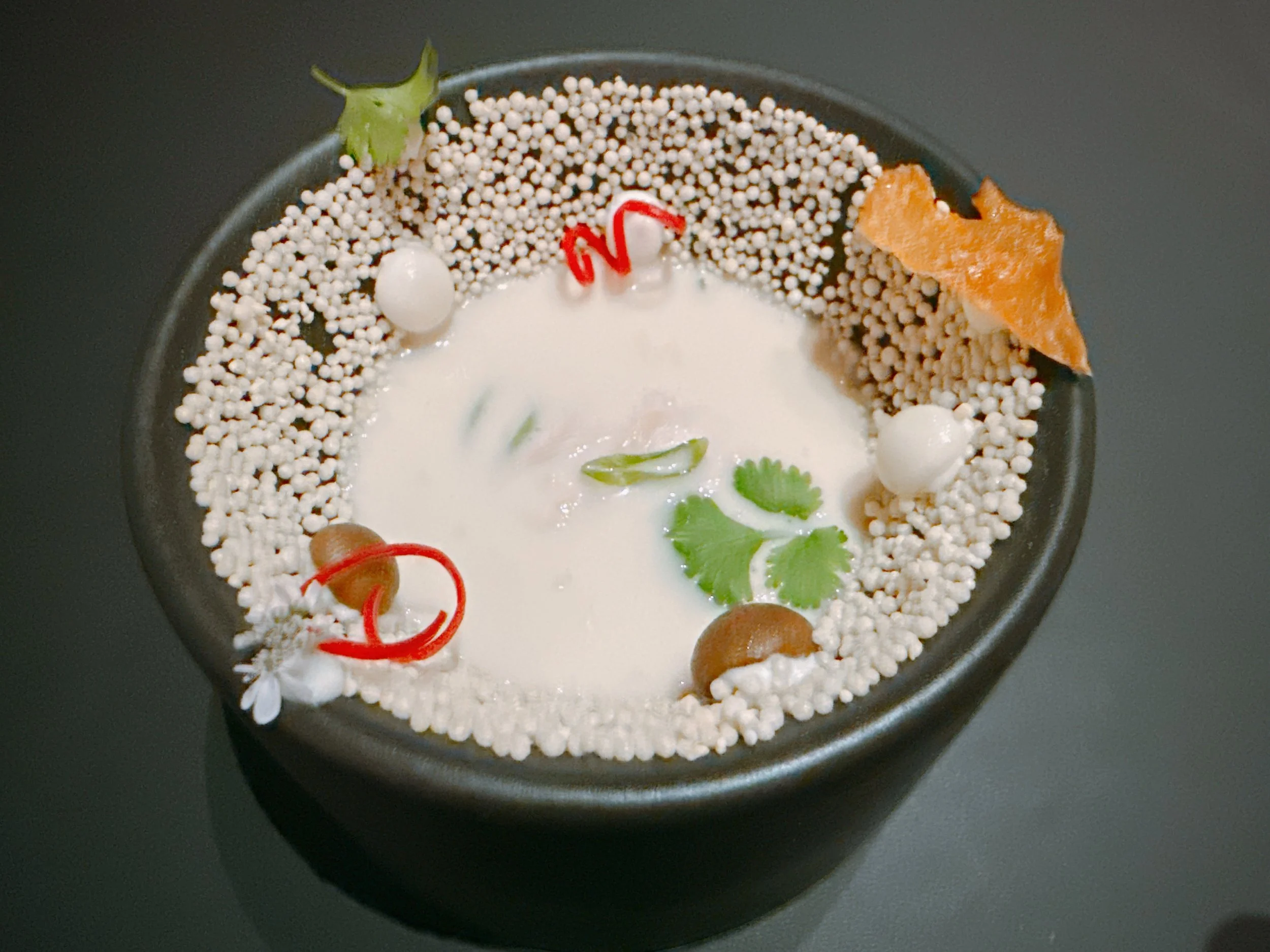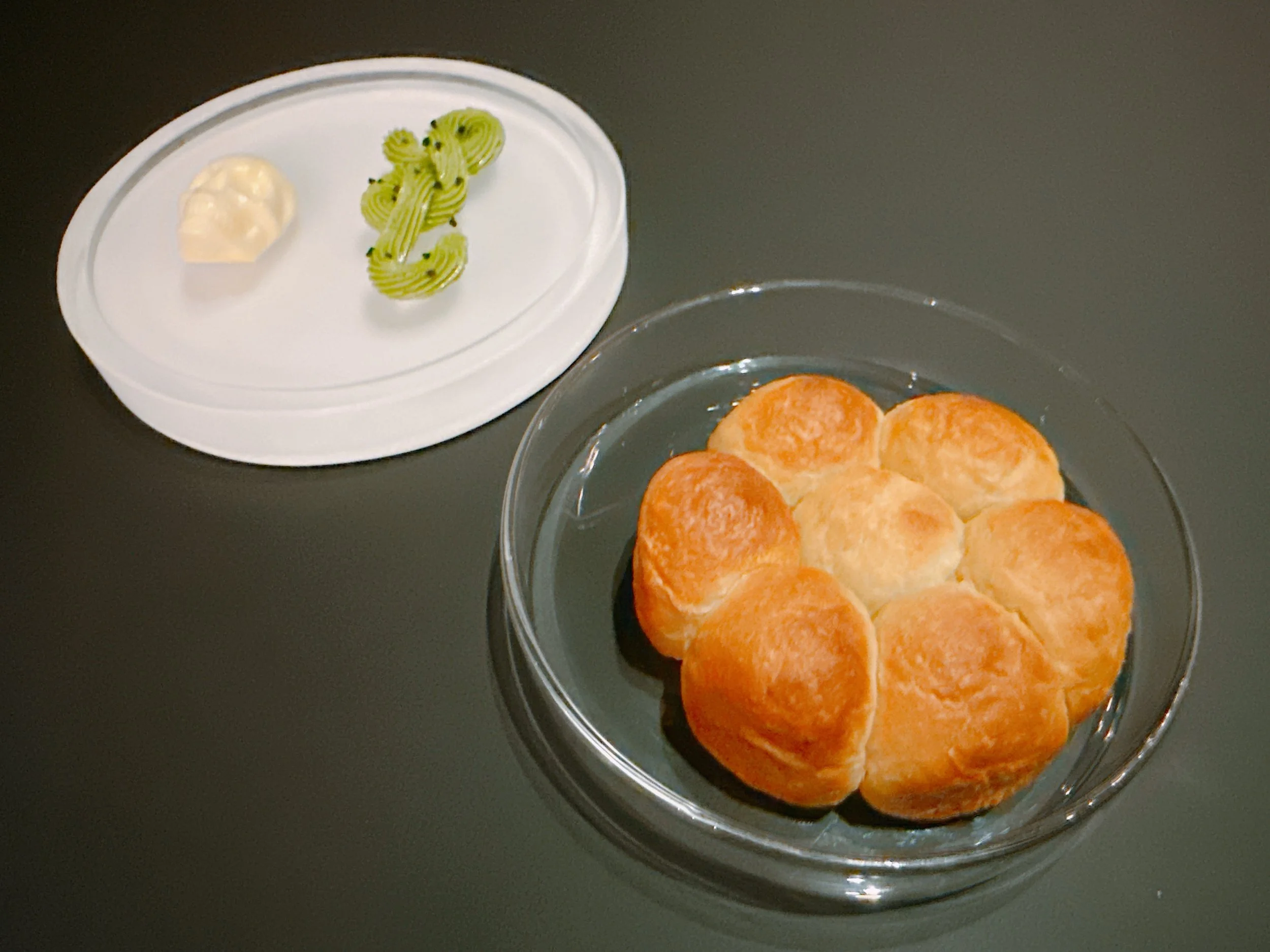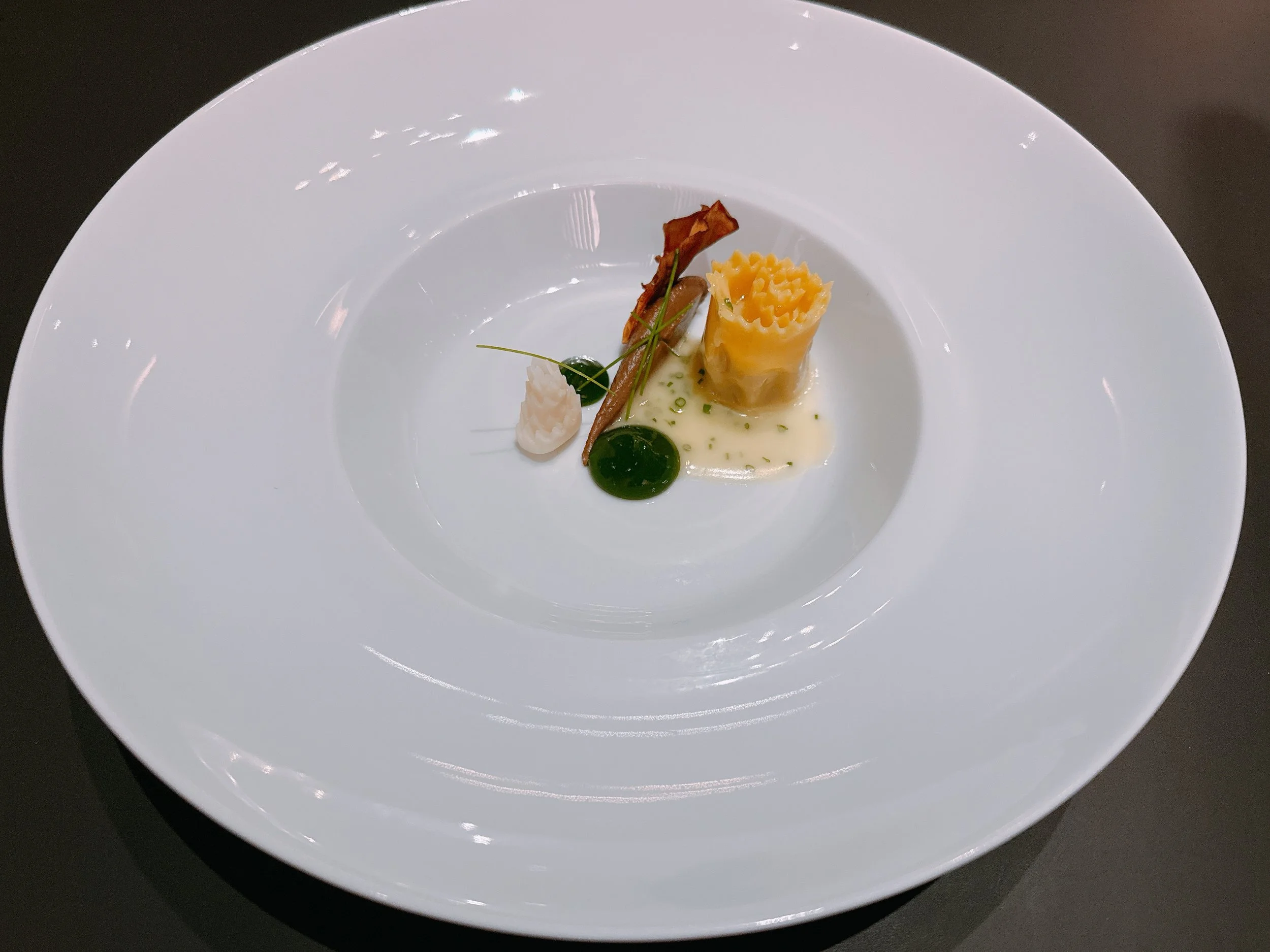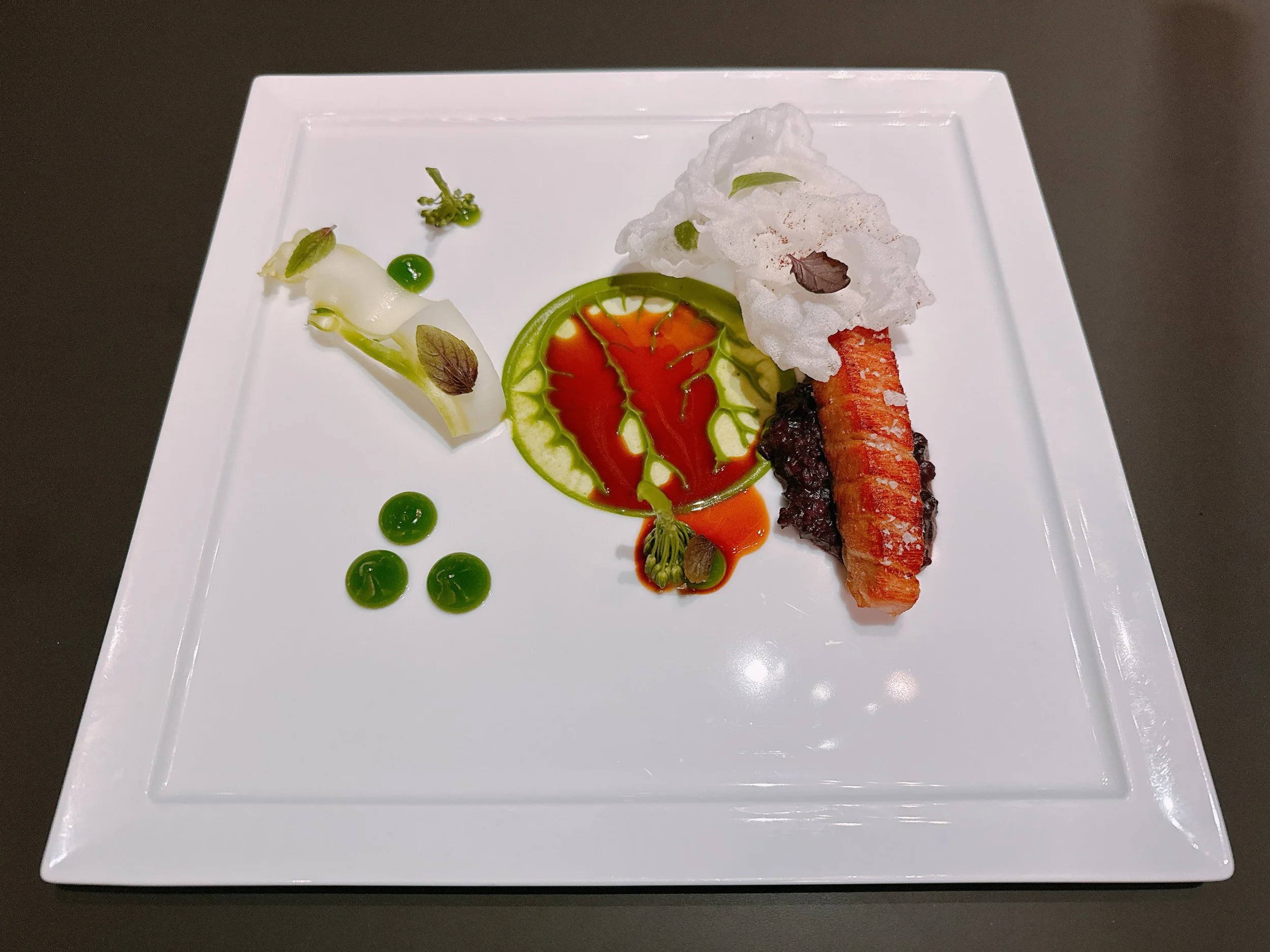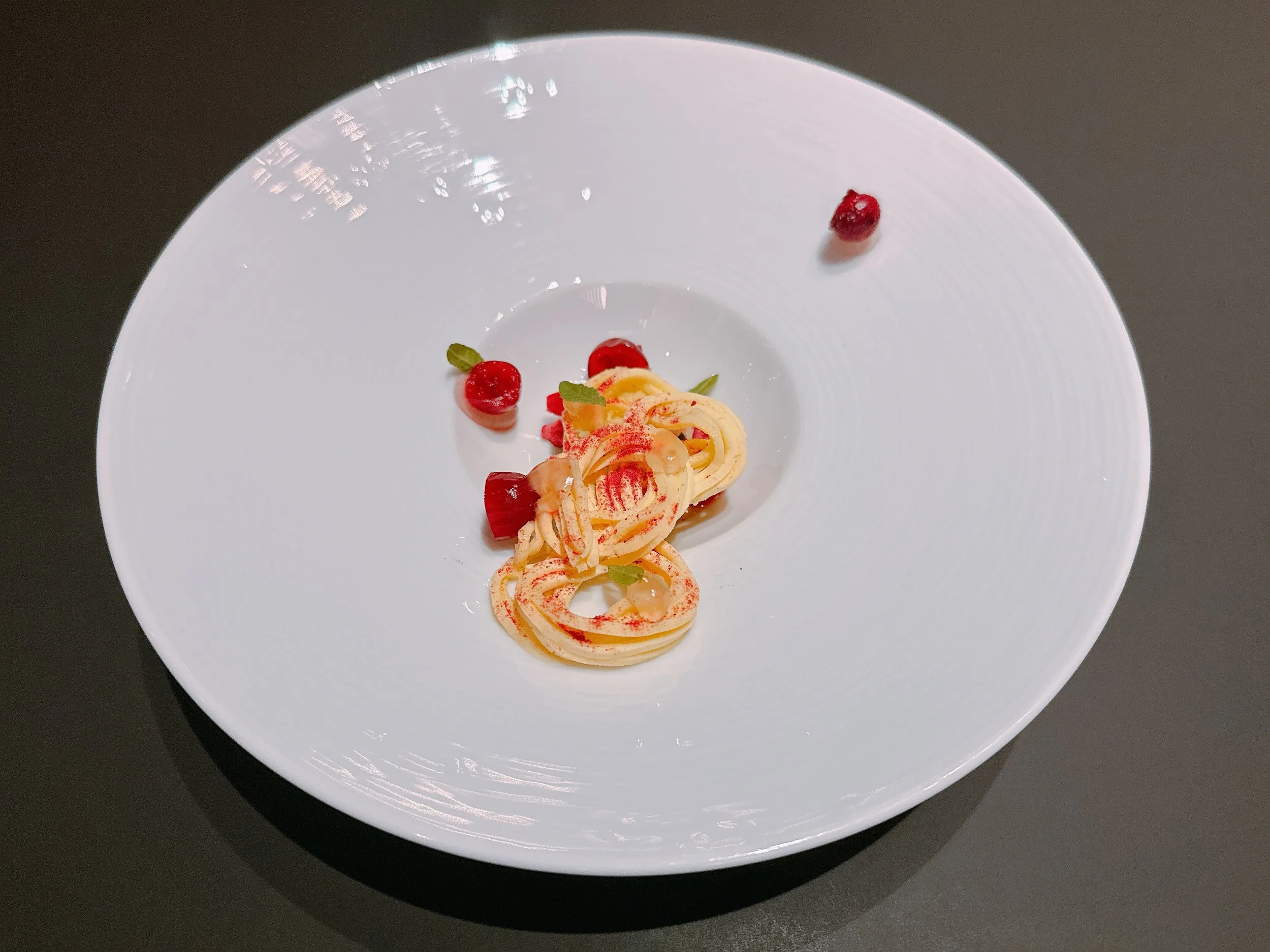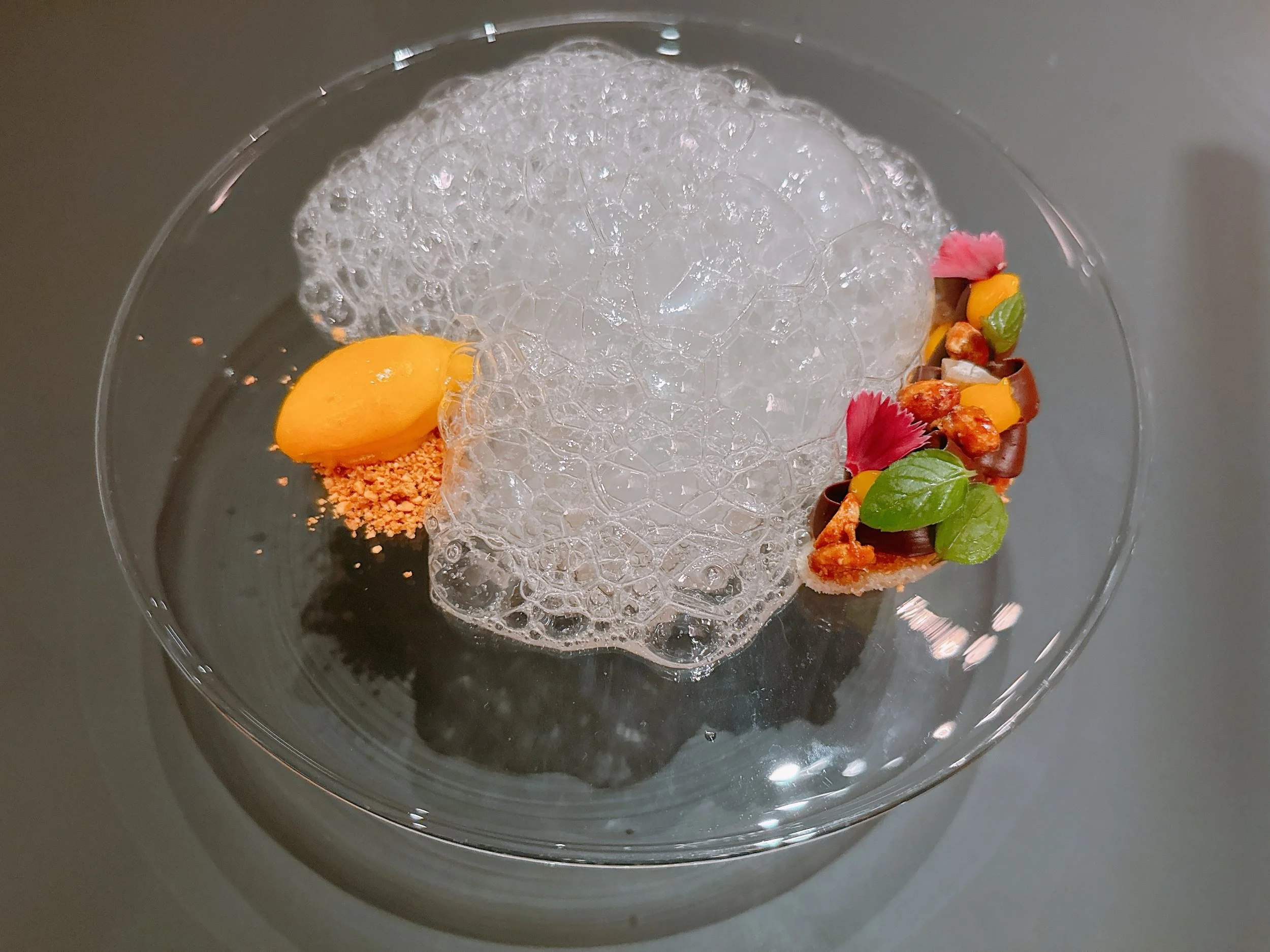Ever - Chicago
Rating: 17/20
Where: Chicago, IL
When: Dinner for 3 on 11 April 2025
Cost per Person: Tasting menu $325, Wine pairing $185
Accolades: 2 Michelin Stars
Why: Modern American cuisine in a luxe setting
From the outside, Chicago's two-Michelin-starred “Ever” doesn't look like much. Its name is printed so unobtrusively that it is invisible from further away - one might think that one is in the wrong place unless one is already standing right in front of the restaurant. The interior, though, is a set designer's dream of a modern fine-dining restaurant. Concrete-sprayed walls, carpeted floors - all in tones of gray and black. No windows to distract from the dining experience. And no convoluted room layout that might suggest a past non-restaurant use for the building. The detail even extended to the three bathrooms, all with unique designs and different audio books playing as background soundtracks. All of that amounted to a serene temple of food. The only downside of being a platonic ideal of a fancy restaurant is that, arguably, the result lacks a bit of character. Its timeless elegance was probably the reason why the restaurant was chosen as a filming location for the TV series “The Bear” - where it was used as, well, the platonic ideal of a three-star restaurant. On TV, in addition to being served amazing food, guests are also given a perfect service experience. Their backgrounds are researched ahead of time, and the service is adjusted on the fly if the servers overhear anything amiss. If such a restaurant truly exists, then I haven't been to it yet. But Ever actually did manage at least inklings of brilliance, as we will see later.
I should note that we had been to the chef's previous restaurant, three-starred Grace in 2015. But after such a long time, and a change of venues, we didn't really have any preconceptions about what to expect this time.
Ever served a tasting menu that could be adjusted to dietary restrictions with prior notice. There was also a wine pairing for $185, as well as a non-alcoholic pairing. The wines in the pairing were fine, not mind-blowing, but they went well with the food. They were also somewhat unusual: Greek and Spanish whites, a Mexican red - it's rare that Vivino tells me that I had tried only a single one of the wine producers in a pairing before. I also appreciated that the pairing started with the very first food item served at the table. No implicit “requirement” to order an aperitif here.
But let's back up a bit. During our walk from the front door to the dining table, we stopped in an alcove for a cup of tea: a mixture of horchata, chai tea, pandan, lemongrass and other ingredients (not pictured). It was light, fruity and acidic 17. In addition, we were invited to pick a tempura gooseberry that was hanging from the ceiling, next to other dried ingredients that would later appear in our dinner. The fruit was also light and a bit tart 16.
The first course served at the table was a semifreddo made from Icelandic yogurt topped with ossetra grand reserve caviar from Uruguay. It came with a green garlic sauce and several spring herbs attached to the inside of the bowl. The semifreddo was quite tart and went well with the lemony sauce. The individual herbs had noticeably different flavors. The caviar was not quite strong enough to stand up to the rest of the dish, but otherwise, this was a lovely start to our evening 17.
Next: a seasonal dish based on white and green asparagus. The white asparagus had been poached in olive oil and was served in a green asparagus aeration that contained a brioche crisp, some pieces of yuzu and a sage leaf on top. The warm white asparagus was lovely, in particular since it was soaked in the broth, and the sauce was nicely creamy with the acidic yuzu and marinated slices of (maybe) more white asparagus. The crunchy brioche wasn't too exciting tastewise, but I guess it was a decent textural additional 17.
A Thai-inspired soup with lemongrass, lime and ginger contained slices of poached chicken breast, mushrooms, and cilantro. It was served in a bowl crusted with puffed sago “rice”. The soup was delicious: flavorful, but not too heavy, with the chicken meat tender and perfused with the soup's flavor. The marinated mushrooms added some acidity and the sago a crunchy texture. The paired wine (a Spanish 2019 Ossian Quintaluna) was also much enhanced when alternated with the food 18. The pescatarian alternative replaced the chicken with tofu, resulting in a much less flavorful alternative 16.
Roasted ora king salmon was served with a vegetable demi glace, two types of mustard, and fennel prepared several ways: fresh, as a puree and as a crisp. The salmon was cooked to perfection, with a crispy skin and an almost row-looking interior. I found the anise flavor of the fennel to be a bit much by itself, but it wasn’t noticeable when eaten together with the sauce. There was also a hint of spice in the dish - delicious. Only the two mandarin wedges seemed somewhat misplaced in the dish - maybe they were an attempt to stick with the course's orange color scheme 19.
The bread course consisted of a Hokkaido milk bread and two spreads: a house-made buttermilk crème fraîche and an herb-infused butter from Wisconsin, both infused with rosemary smoke. The bread was pretty neutral in taste, but that was probably intentional: it was meant to sop up the sauces in the next few courses. The bread also went nicely with the spreads 17.
The following course featured a Pekin duck filet topped with herbs. It was served with a duck/chicken reduction, a kale sauce, a black truffle/ricotta/semolina dumpling, and an onion seasoned with herbs. I have to admit that duck is not one of my favorite ingredients, so I truly expected the sides to win out over the fowl. The exact opposite happened. The duck was cooked perfectly, with very little fat and lots of flavor that was enhanced even more by the herbs on top - delicious (a 19 taken by itself). The dumpling? Creamy and fried tasting, it was merely ok (maybe a 15), and the onion was nothing special (14). There was also an orange (hidden under the truffle slice) - and just as with the mandarins earlier, I had no idea what it was doing here. Still, with the amazing duck and great sauces, overall this was still a 18. The pescatarian version of this dish had a grilled hamachi instead of the duck, and a different sauce. The fish had a nice crunch on its outside, but otherwise it was quite overcooked and salty 16.
Next, it was time for a pasta course. A rosette ravioli (named after its shape) was filled with a Yukon gold potato puree, turnips and chives. It was paired with a chive gel, a marinated turnip, a maitake mushroom sauce and a herbal beurre monté. The pasta was almost al dente - it was cooked just a hint beyond that point. The sauces were lovely, the turnip very acidic, making for a nice combination of flavors 17.
Our last savory course featured a koju cured shortrib, served over forbidden rice along with a broccoli puree, pickled broccolini and a fried rice chip. The beef was cooked to a falling-apart texture, rendering it maybe a bit too mealy, but otherwise quite good. The broccoli flavor was nice as well, and while the rice chip was a bit too fatty by itself, it added a welcome texture to the dish. Halfway through the course, we were also served a longish cracker filled with New Zealand beef tartare, koju, mayonnaise and organic beeswax (of all things). This bite had a nice acidity and lots of flavor. Overall, a nice final course 17. The pescatarian version of this dish used a blue fin tuna, which unfortunately was quite overcooked. The tartare replacement of mushroom duxelles and red onions was also much too salty. Nowhere near as good as the beef version 14.
Then it was on to desserts. The first one featured a lemon/olive oil cake with cranberries, and a “pasta” made from cream topped with jam dust and green chartreuse. Clearly, this dish was made to resemble spaghetti with tomato sauce, while being nothing of the sort (and also quite unlike a German “spaghetti ice cream”). The “pasta” was creamy and sweet, and the cranberries added some fruit and acidity. Fine, but not mind-blowing 15.
The second dessert had a curious presentation. It was served on an elevated plate that had a hole at its center. Inside that hole was some dry ice to which our server added a banana/chai tea. That resulted in copious amounts of lightly acidic foam spilling over the two plated parts of the dessert. One was a mango sorbet on brown butter crumbles, the other a banana financier with chocolate mint toppings. The mango was fruity and quite thick in texture, the banana/chocolate combination classic, but relatively light on the banana front (maybe a good thing). The acidity of the foam lightened the dish up further - something always appreciated at the end of a long tasting menu 16.
Our final bite was a puff pastry waffle with two fillings: a rhubarb-hibiscus mixture and gianduja (chocolate and hazelnuts). The former tasted a bit like rhubarb pie, the later similar to Nutella. Simple, but quite tasty 17.
The service throughout the evening was very good. While our main server and the sommelier were professional and matter-of-fact, some of the other staff joked around, and kept the atmosphere light. I've seen restaurant servers adapt their formality depending on the mood at a table, but it was curious to see that each individual server behaved differently. I'll finish with one more anecdote about the service. Our wine pairing usually had quite reasonable pours, except for the Mexican wine that accompanied the pasta course. It was the only one poured from a decanter and I ended up with a tiny fraction of the amount of the other pours. We were wondering among ourselves why this was the case. Was it intentional? Or maybe it was just harder to judge the amount when pouring from the decanter? A few moments later, our server (who so far had had nothing to do with the wine pairing) came to our table and added a healthy additional pour of the wine to my glass. Clearly, someone must had overheard our confusion and immediately moved to correct the problem. Now that's exactly what would have happened in that idealized three-star restaurant on The Bear. Bravo!
Overall: A wonderful modern American fine dining experience. It is hard to pin down the “style” of the restaurant: some dishes were seasonal, others less so, some felt American, others had Asian influences. It mirrored the restaurant's interior design: very elegant, but a bit generically so. It was also unusual that the pescatarian replacement dishes were uniformly much weaker than the originals (usually it’s more of a 50/50 split). Anyway, with great service (in several cases exceptionally good), and great food (sometimes at a three-star level), that’s just nitpicking 17.

